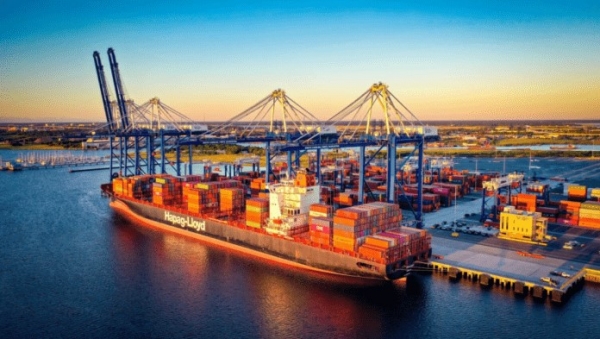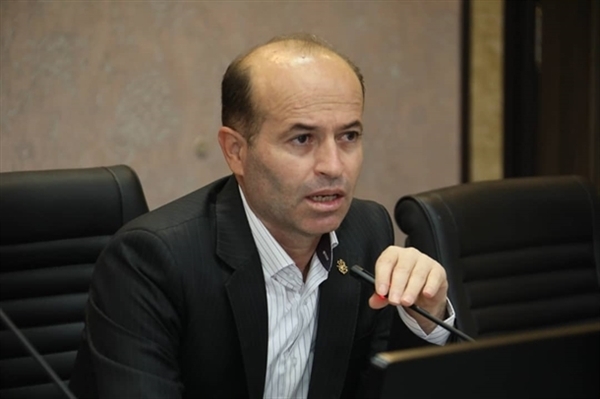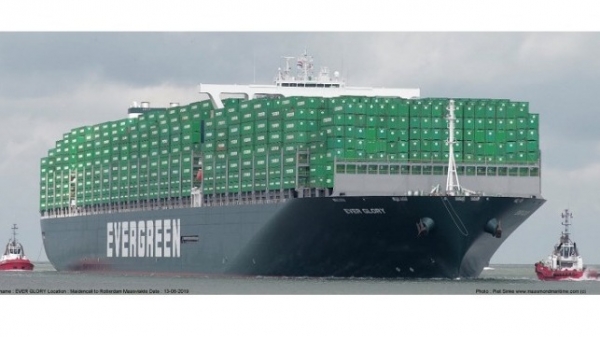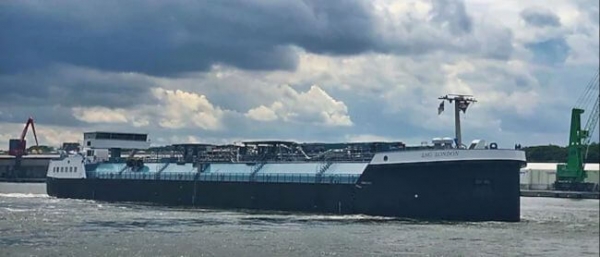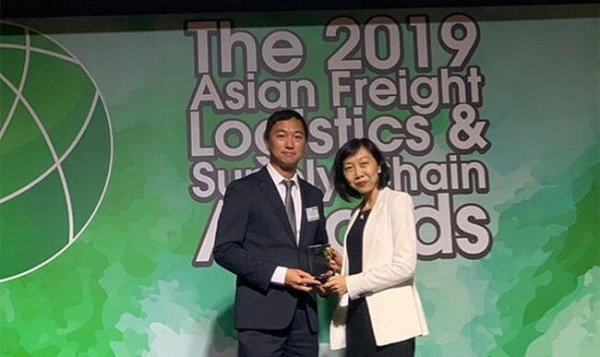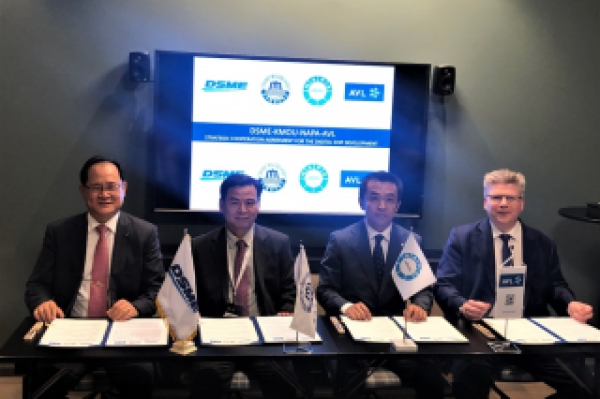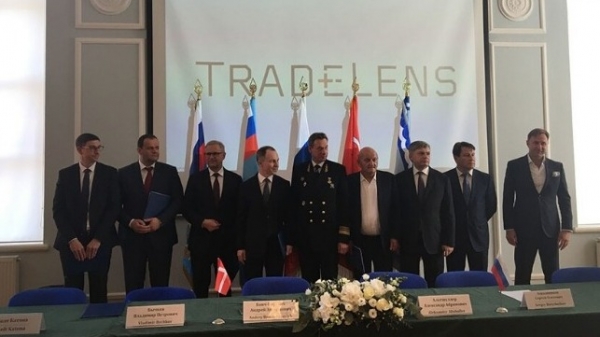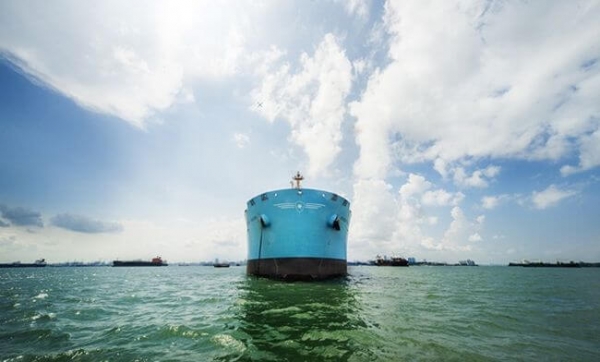News
Latest news
Shippers look for alternatives as Panama Canal delays lengthen
Shippers are now actively rearranging Asian shipments, moving back from the US east coast to the west coast, as the full ramifications of the Panama Canal’s prolonged reduced operational capacity hits home.
Facing what it has described as an “unprecedented” drought, the Panama Canal Authority has shaved a couple of metres off its maximum draft for its neopanamax locks whereby ships transiting can only go through the waterway with a 13.41 m depth and the number of daily transits has been slashed by 20% to 32 a day – measures that are expected to be in place into the new year as the El Niño weather phenomenon is likely to bring more dry weather.
Aware of the limitations climate change is bringing to bare on this crucial waterway, the canal’s administrators are looking at alternative ways to get shipments across the country.
“The Canal’s focus on the future is not only limited to addressing current challenges but also includes proactive environmental initiatives. Efforts are being made to safeguard the water basin, preserve forest cover, and explore the possibility of developing a logistics corridor to diversify cargo handling options within the country,” the canal’s administrators stated in a release yesterday.
“We have to find solutions so that we can continue to be a relevant route for international trade. If we don’t adapt, we will die,” canal administrator Ricaurte Vasquez said at a recent press conference.
Cruisegoers were left reeling yesterday with the news that Royal Caribbean’s Rhapsody of the Seas has suddenly decided to axe all its Panama Canal crossings for the 2023 – 2024 winter season, with holidaymakers now forced to book alternative flights. While the cruise line failed to provide reasons for the sudden cancellation of this popular transit, the growing queues at the canal are thought to have played a part in the decision.
Waiting times for merchant ships have been growing this month, starting out at 15 days on August 1 and have now topped 20 days with a growing backlog of ships waiting at either end of the canal (see map below).
Special auctions are in place for cancelled slots, with very high fees demanded. Liners have reacted by implementing canal transit surcharges of up to $500 per teu.
Data from Denmark’s eeSea shows the average number of boxship transits over the past eight weeks has been 58 per week. Last week it slipped to 55.
“Obviously, if the drought continues, and we only handle, say 55 vessels like last week, the problem will accumulate,” warned eeSea’s founder Simon Sundboell.
Peter Sand, chief analyst at freight rate platform Xeneta, said shippers must now consider their options as Panama congestion is on the rise.
“Playing the spot market too tight may not be the best option right now, as sentiments push transport costs up again every month,” Sand advised.
Andy Lane from Singapore container advisory CTI Consultancy told Splash that backhaul container services can go 2,000 nautical miles further through the Suez Canal or 5,000 nautical miles further around Africa. Some headhaul services can likely be switched also to Suez routings, he suggested.
“It just takes a few weeks of lead-time to be able make such network changes. The backlog is going to take months to clear it would seem, so it would be good for the container carriers to start planning now,” Lane urged.
Hapag Lloyd increases rates from UAE to North Europe, West Med and North Africa
Hapag Lloyd has announced increased ocean tariff rates from the United Arab Emirates (Jebel Ali and Abu Dhabi) to North Europe (Germany, Netherlands, United Kingdom, Belgium, France, Poland, Denmark, Sweden, Ireland, Norway, Finland, Lithuania, Czech Republic, Hungary, Latvia, Austria, Switzerland, Slovakia, Estonia, Iceland, Luxembourg) and West Mediterranean / North Africa (Spain, Portugal, Italy, Algeria, Malta, Tunisia, Morocco).
The cost will rise for 20' and 40' dry containers, as well as high cube dry equipment.
This increase will be applicable for sailings beginning on 25 August 2023 and will remain in effect until further notice.
|
Dry Containers |
US$ / dry 20’ |
US$ / dry 20’ |
US$ / dry 20’ |
US$ / dry 40’ |
US$ / dry 40’ |
US$ / dry 40’ |
|
|
From |
To |
Current base |
New base |
Delta |
Current base |
New base |
Delta |
|
Jebel Ali |
North Europe |
390 |
590 |
200 |
230 |
380 |
150 |
|
Jebel Ali |
Mediterranean |
366 |
666 |
300 |
232 |
532 |
300 |
|
Abu Dhabi |
North Europe |
390 |
590 |
200 |
230 |
380 |
150 |
|
Abu Dhabi |
Mediterranean |
366 |
666 |
300 |
232 |
532 |
300 |
11 new investment contracts in Chabahar port
Due to the increase in annual loading and unloading capacity of Chabahar port, this port offers great investment opportunities, said the Director General of Ports and Maritime of Sistan and Baluchestan
Regarding investments in Chabahar port, Behrouz Aghaei added that 12 companies have invested in Chabahar port and 11 investment contracts are being signed. Considering this, it is expected that by the end of this year significant investments will be made in this port.
Aghaei continued: The foreign and domestic investors have chosen the port of Chabahar as their investment destination, and in recent years we have witnessed an increasing number of investors in this port. Due to the increase in annual loading and unloading capacity of Chabahar port to eight million tons in the first phase of the Shahid Beheshti Port Development Project, this port offers good investment opportunities.
The port of Chabahar, as the largest oceanic port of the country, has great potential in terms of land and sea, due to its location outside the Persian Gulf; it can play a significant role in increasing the level of maritime trade in the country.
Reference: Pmo.ir
The Future of Tugs in a Changing World
Currently several means of transport and workboats are undergoing accelerated development towards automation and automated movement.
Almost daily publications appear about automation in shipping. Names of large maritime industrial companies are often found in these publications, giving the idea that they are a major driving force behind these developments.
The question can and should be asked, how realistic are these developments? Are they generally applicable, applicable for certain sectors or trades, or perhaps not applicable at all?
In the recently published book Tug Use in Port. A practical Guide, attention has been paid to future autonomous or remote controlled tugs. As a sequel to this specific item, a recently published report has addressed the question: How will tugs and tug assistance evolve in the coming 30 years? What are the factors of influence? Is it just the important issue of automation, or are there also other factors that will play a role and have to be taken into account? The answer is “Yes.” See, therefore, the full report here. It is also these factors that are addressed in this article. They should be regarded in combination with the continuing automation processes on board ships and tugs.
Some basic situations to keep in mind:
• At present and also in the coming decades, there is hardly any uniformity in ships and this applies to a great extent to tugs as well.
• Worldwide, future developments will differ greatly by country, port, shipping and towing company. This particularly applies to the way automation progresses on board ships and tugs.
• The major components - ships, ports, tugs, pilots - of the maritime transport chain interfere. This means for instance that an increase in ship size or in its maneuvering capabilities has its effect on ports, pilots and tugs, just as a change in port layout or infrastructure has its effect on ships, pilots and tugs.
• Finally, the developments that will be discussed below can all be disturbed by trade wars, political conflicts, climate changes, etc.
Now the important factors that are expected to play a role in the coming 30 years and will have its effect on ports, port services like tugs and tug assistance:
Seaborne trade will increase. UNCTAD expects that seaborne trade will triple by 2050 compared to 2016. DNV GL estimates a lower growth of approximately the half. Even then it will have a large effect on ports and port services, like tugs.
Proportional changes in type of cargoes. According to DNV GL's Energy Transition Outlook 2018 the world needs less energy from the 2030s onwards owing to rapid gains in energy efficiency. DNV GL forecasts that the primary energy supply peaks in 2032 while oil demand peaks in the 2020s and then decreases. Natural gas takes over as the biggest energy source in 2026. This includes a decrease of crude oil and other oil products to be transported after 2020 and an increase of natural gas. This will affect the infrastructure of ports and increase the number of offshore terminals and will consequently affect tugs and tug assistance.
Means of sea transport changes. The size of certain type of ships may further increase, e.g. container ships and gas carriers. In addition, new methods of sea transport may be developed and certainly all the activities at sea will introduce new design features for new ship types. Also other transport systems may take over. For instance, underwater transport may become reality or transport by pipelines, having its effect on conventional sea trade and ports. Tugs should keep pace with these developments.
The maneuvering capabilities of large ships, e.g. container vessel, ferries and cruise vessels, are expected to increase, reducing the need for tug assistance. It should however be said that even the most automated ships, such as remote controlled or autonomous ships, will still experience engine or steering failures as is the case with present ships, although possibly in a lower degree. If this happens at sea along the coast and such problems cannot be resolved in time, specific assistance of emergency towing vessels or suitable harbor tugs will be needed for such ships.
Tug assistance in adverse weather situations. There is another aspect which concerns in particular future ships with increased maneuvering capabilities in restricted waters. The situation may arise that when environmental conditions become such, for instance very strong winds, even these ships which normally would not use any tugs, have to use tugs to keep the ship under control. Consequently, there will always be a need for a sufficient number and power of tugs to be available.
Some more factors of importance:
• On a wider level, it is envisaged that the exploitation of the seas and oceans will increase which will bring more vessel movements and changes in the activities in and near ports.
• The growing size of ships and high safety requirements may further result in a need for tugs to make fast outside the breakwaters in wave conditions, and also because of the risks involved future developments may include more gas terminals located offshore and away from residential areas.
• Ports and transshipment areas moving into more exposed conditions could be a long term development, further supported by increasing offshore activities, offshore terminals and perhaps offshore (floating) ports with less possibilities of building long protective breakwaters.
It can therefore be concluded that ship handling in exposed conditions will continue to grow in importance, consequently tugs should be designed and equipped to be able to operate in these conditions.
During the coming decades a large variety in ships will be seen as indicated above, from well equipped vessels with a large degree of automation to, let us say, rather conventional ships. These conventional ships will still need tug assistance. In addition, it should not be forgotten that in many ports tugs have to do more than just handling seagoing vessels, as is explained in the book Tug Use in Port.
So, apart from the developments in the field of automation on board ships and tugs, other important developments are expected in the coming decades that will affect ports and port services such as tugs and tug assistance. All these developments result in high additional demands on tugs, tug crews and tug assistance. It is therefore of utmost importance that capabilities of tugs and tug crews keep pace and meet the requirements set by these future developments. At the same time the progress of automation on board tugs and ships may help to create tugs being fit for the future.
The large-format hardback book Tug Use in Port is illustrated with a wealth of detailed diagrams, graphics and photographs. The book can be ordered at a price of €45 at The ABR Company Limited
By:Henk Hensen
www.tugandosv.com.
Europe’s First Inland-Waterway LNG Bunker Vessel ‘LNG London’ Begins Operations
Europe’s first inland-waterway liquefied natural gas (LNG) bunker vessel has performed her first bunkering operations, with the Containerships Polar and Containerships Nord vessels, in Rotterdam, the Netherlands. The LNG London (which is owned by LNG Shipping – cooperation between Victrol and Sogestran) is on long-term charter to Shell. It will primarily be used by Shell for LNG bunkering in the ports of Amsterdam, Rotterdam and Antwerp.
“The entry into service of LNG London shows our ability and commitment to providing safe and reliable supplies that help meet the growing need for cleaner-burning fuel,” Tahir Faruqui, General Manager, Shell Global Downstream LNG, said. “We are pleased to have three LNG bunker vessels in our fleet and look forward to others joining them in the future.”
Gisèle Buelens, CEO of Victrol, said: “In 2017, Shell selected us to build an inland LNG bunker vessel. As pioneers in bunker vessels, we designed a completely new vessel that complies with the latest safety and operational requirements. We are pleased that she has completed her first operation and that many more LNG bunkering operations will take place in the years ahead.”
Pascal Girardet, CEO of Sogestran, said: “We are very proud of LNG London, the first inland LNG bunkering ship in Europe. The inland capability offers clear logistical benefits for end users, benefits that will help drive the growth of LNG as a cleaner marine fuel.”
LNG London will be loaded with LNG at the Gate terminal in Rotterdam. An innovative transfer system enables the delivery of LNG to seagoing vessels, inland barges and terminals onshore, while a restricted air draft allows the barge to sail via inland waterways to Antwerp and Amsterdam if required.
When compared to traditional marine fuels, natural gas significantly reduces NOx and reduces overall GHG emissions by up to 21%, according to a “well-to-wake” emissions study by Thinkstep. Given the International Maritime Organization’s 0.5% sulphur cap implementation by 2020, there is an increasing interest from the international marine community to consider LNG as a marine fuel.
Reference: shell.com
MSC Wins Best Shipping Line Asia–Africa Award
MSC is proud to have won the Best Shipping Line: Asia – Africa category at the prestigious Asian Freight, Logistics and Supply Chain (AFLAS) Awards, underlining the company’s strong position in the region.
MSC has responded to growing demand by increasing services between Asia and Africa, reducing transit times and providing more efficiency and ease of access for customers. We are honoured and grateful for the endorsement by Asia Cargo News readers, among them many shipping line service users.
The awards are hosted and organized annually by Asia Cargo News to recognise leading logistics and supply chain providers, based on excellence in customer service, innovation and quality of service. This year, they were announced on 17 June at a Gala Dinner and Award Ceremony, held at The Asia Society Hong Kong Centre.
The nomination and voting process allowed the more than 15,000 readers and e-news subscribers to first determine the leading companies in the market, and then determine the winners, making the results the opinion of service users rather than a panel of judges.
Reference: msc.com
DSME, NAPA, KMOU, and AVL Team Up on Developing Digital Ships
Daewoo Shipbuilding and Marine Engineering (DSME), Korea Maritime and Ocean University (KMOU), NAPA and AVL have signed a strategic cooperation agreement to develop digital ships and related strategic solutions.
The deal was signed at Nor-Shipping 2019 exhibition in Oslo held from June 4 to 7.
As explained, the agreement will combine the four parties’ expertise in naval architecture and shipbuilding, engines, big data, and software development to pioneer new solutions that combine all of these elements for the first time.
Specifically, the collaboration will cover all aspects of creating comprehensive digital twins — from the acquisition and processing of quality engine room data, ship performance and meteorological data to the training, simulation and human machine interface that will be necessary to turn insights from engine data into practical efficiencies.
“The development of digital twin ship and engine is one of the most exciting outcomes of the recent surge in maritime digitalization and development of the Internet of Things. By creating a virtual, real-time copy of engine equipment, we can better monitor, analyze, and predict performance, leading to safer and more efficient operations,” Odin Kwon, CTO of DSME, commented.
“Digital twins bring together a range of different fields of expertise, requiring hardware, software and operations to work together. This is why collaboration is essential if this technology is to mature… We’re excited to work together to develop digital twin technology and a platform that will make future generations of ships safer and smarter,” Kwon added.
“We are actively entering into digital era in the industry nowadays which could be a basis for the development of autonomous ship. Building a digital platform should be well balanced between actual application of technology and academic basis,” Professor Deog Hee Doh from KMOU said.
He further said that KMOU faculty members have started developing a platform in which AR/VR and digital twin technology are embedded. According to the professor, the university will focus on providing a knowledge-based platform in the fields of simulations and communications related to digital ships extending to AR/VR.
“New generations of vessels will set the standard for decades to come, and digital infrastructure will be just as important as the physical and mechanical elements of a newbuild,” Naoki Mizutani, Executive Vice President, Shipping Solutions at NAPA, noted.
Each partner brings a different angle to the collaboration, coordinated by DSME. NAPA will develop digital twin ship models with digitalized components and a real-time simulation platform to integrate between engine models and ship models.
Meanwhile, AVL will develop the simulation tools and methodologies that the partnership projects will require.
Additionally, KMOU will contribute by providing the existing infrastructure as a basis for further development and optimization.
Reference: worldmaritimenews.com
DSME Wins Another LNG Carrier Order from Maran Gas
South Korea’s Daewoo Shipbuilding & Marine Engineering (DSME) has secured another LNG carrier order from Maran Gas Maritime.
The Greece-based shipowner, part of Angelicoussis Shipping Group, ordered the 174,000 cbm unit on June 12. The vessel will be built at Geoje Okpo Shipyard and is scheduled for delivery by the first half of 2022.
With the latest order, DSME secured six LNG carriers this year, five of which would be built for Maran Gas Maritime. The parties are in discussions for more such shipbuilding contracts.
The shipbuilder’s orderbook also includes six super crude oil carriers and three submarines, and has a total value of around USD 2.69 billion. The number represents 32% of DSME’s 2019 annual orderbook goal of USD 8.37 billion.
Reference: worldmaritimenews.com
Maersk Furthers Business in Russia
A.P. Moller - Maersk and Russian Ministry of Transport signed a Memorandum of Understanding on June 5, enabling the launch of TradeLens in Russia. The blockchain enabled platform, jointly developed by Maersk (through its subsidiary Maersk GTD Inc.) and IBM, is expected to significantly facilitate international trade, not least by the inclusion of the Port of St. Petersburg, Russia’s main container gateway, as part of the pilot launch.
The agreement, signed by Maersk CEO Søren Skou and Yuriy Tsvetkov, Deputy Transport Minister, enables the implementation of TradeLens on the Russian market with the aim of introducing digital documentation flow in what is currently mostly paper-based transportation processes.
“The main result of the implementation of TradeLens, according to our expectations, should be an increase in the transparency of the contracting procedure by distributing information about supply and demand, conditions and operations between many participants of the transport and logistics processes” said Tsvetkov.
Last week it was announced that more carriers will be joining the blockchain-enabled digital shipping platform, which will result in data for nearly half of the world’s ocean container cargo shortly available on TradeLens.
TradeLens enables participants to connect, share information and collaborate across the container logistics supply chain ecosystem. Members gain a comprehensive view of their data and can digitally collaborate as cargo moves around the world, helping create a transparent, secured, immutable record of transactions.
With more than 100 participants on the platform today, TradeLens is already processing over 10 million discrete shipping events and thousands of documents each week, providing shippers, carriers, freight forwarders, customs officials, port authorities, inland transportation providers and others a common view of transactions, which can build trust. A commitment to data ownership rights and permissioned access to data helps ensure privacy and confidentiality, while enabling users to collaborate more efficiently with real-time access to shipping data.
Maersk to build its first cold store in St. Petersburg
Also on June 5, Maersk participated in the ground-breaking ceremony for the new warehouse in St. Petersburg. Constructed by the Russian industrial developer PNK Group, the 23,700 square meter facility will be located within the PNK Park Sofiyskaya KAD in St. Petersburg. It will have 35 docks able to serve daily throughput of up to 200 trucks. The maximum storage capacity will be over 50,000 tons, and the fully Maersk-operated warehouse will employ over 200 employees.
Approximately 40 percent of the new warehouse will be occupied by European fruit company Fyffes, with the remaining capacity available for other customers from the fresh and frozen produce segment. The new cold store will enable Maersk to offer end-to-end solutions to Russian customers.
The facility will offer separate storage chambers for frozen produce (-25°C), chilled (+2/+8°C), as well as for bananas, which require a specific temperature of +13°C.
Fyffes Chairman David McCann said: “Today’s ground-breaking is a very important milestone in Fyffes’ strategy to grow our business in Russia. As the largest importer of bananas in Europe, Fyffes is delighted to partner with Maersk in this new warehouse development, which will increase our ripening capacity in Russia to over 200 thousand boxes of bananas per week.”
In 2018, imports of fruit to Russia increased, with banana imports going up by one percent, citrus fruits by 7.4 percent and apples by nearly 13.5 percent compared to the year before. Experts expect fruit imports to continue to increase in the coming years. Since 2017, Russia has been the second largest importer of bananas in the world, after the U.S. and surpassing Germany.
Reference: maritime-executive.com
Maersk Signs Newbuilding Order For Four LR2s
The order is part of an ongoing fleet renewal programme in the LR2 segment. “We are building the LR2s to ensure we have a portfolio of vessels that best fits our customers’ demands. The newbuildings will help us sustain a competitive fleet in a segment that is attractive to customers and owners alike, and to retain a strong market position,” says Søren C. Meyer, Chief Asset Officer at Maersk Tankers.
The contract for the newbuilding programme was signed in a market with competitive asset prices. In May 2018, the company confirmed the order of the first six vessels. The plan is to deliver the ten LR2s from 2020 – 2022. The vessels will come under Maersk Tankers’ commercial, technical and corporate management.
Reference: maersktankers.com























